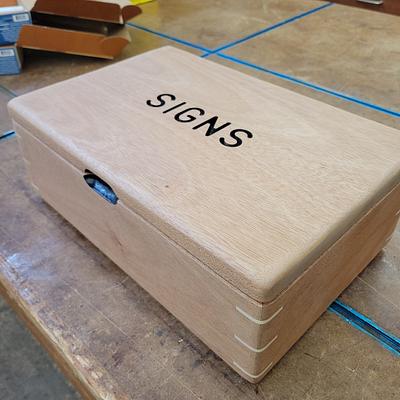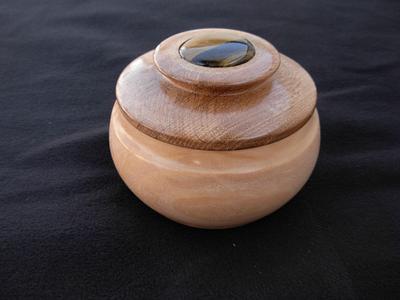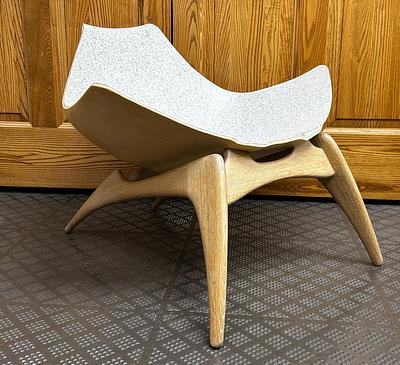Share your craft projects
Make new craft buddies
Ask craft questions
Blog your craft journey
How to Weld Metal: A Comprehensive Beginner's Guide
Welding might seem a bit intimidating at first, but trust me, it’s a super rewarding skill that opens up a whole new world in metalworking and fabrication.
This guide breaks down the essentials for you, covering everything from the different types of welding to the must-have tools and equipment. You’ll get the lowdown on how to prepare your materials, master key techniques, and dodge those common pitfalls, all while keeping safety in mind.
Whether you’re gearing up for a DIY project or diving into a new hobby, this article has everything you need to kick off your welding journey.
The Basics of Welding
Welding is a fundamental skill in metal fabrication that you’ll want to get to know if you're diving into DIY projects or thinking about a career in welding. Understanding the basics is key.
You’ll need to get familiar with different welding materials, like stainless steel and aluminum, and learn the ins and outs of the welding process itself. This beginner's guide will walk you through the essential aspects of welding techniques, equipment, and applications.
So, let’s jump into the world of welding and see what it takes to kick off your journey in this versatile field.
Understanding the Different Types of Welding
Understanding the different types of welding is key for you as a beginner since each method has its own applications and advantages.
MIG welding is your go-to for high-speed jobs, especially when you’re putting together projects like automotive bodies. It can handle thicker materials without breaking a sweat, which is a huge plus. While it’s simple enough for newbies, keep in mind that it might not give you the strongest welds on certain alloys.
On the flip side, TIG welding is all about precision, making it perfect for thin materials and intricate designs. But fair warning—it does require a bit more skill, so it might feel a bit tricky at first.
Then there’s stick welding, which is a champ outdoors and works well on dirty or rusty surfaces, making it a favorite on construction sites. Just remember, while it’s portable, you might end up with some spatter and less-than-pretty welds.
Oxy-fuel welding, though not as popular these days, still has its charm because of its versatility with different metals and thicknesses. Just know that it can’t keep up with the speed and efficiency of the modern methods.
Each technique has its own special spot, so getting to know their distinct qualities really pays off.
Tools and Equipment Needed for Welding
Getting started with welding means you need the right tools and equipment to keep things safe and perform well. You’ll want to invest in essentials like a welding torch and power source so you can tackle different welding techniques effectively.
Don’t forget about personal protective equipment—welding masks and safety gear are a must to avoid any injuries while you’re working. Plus, understanding the role of consumables like welding rods and filler metal can really help you achieve better weld quality.
In this section, you’ll find a guide to all the necessary tools and equipment for successful welding.
Essential Welding Equipment
Essential welding equipment includes key items like a welding power source, welding torch, and welding rod, all of which play critical roles in achieving a successful weld. Your welding power source can vary depending on the technique you're using—MIG welders typically rely on a wire feed system, while TIG and stick welding need different setups.
The welding torch is your go-to tool for applying heat, and picking the right type can significantly affect your weld quality. By understanding how each piece of equipment functions, you’ll enhance your welding skills and get better results.
Alongside these foundational components, don’t forget about protective gear like helmets and gloves—they’re crucial for safety during the process. While the welding power source delivers the energy, the welding rod acts as filler material, melting and merging with the base metals to create a strong bond.
Clamps and positioning tools are your best friends for ensuring stability as you work, helping you maintain precision throughout the welding process.
By appreciating the distinct roles these tools play, you can optimize your techniques, ensuring not just effective welds but also a safer and more enjoyable experience overall.
Personal Protective Gear
The importance of personal protective gear in welding really can’t be overstated; it’s all about keeping you safe from potential hazards while you work. A good welding mask is a must-have to protect your eyes and face from those harmful UV rays and flying sparks.
When you wear the right safety gear, like gloves and fire-resistant clothing, you cut down on the risk of burns and injuries. Prioritizing safety lets you concentrate on perfecting your welding skills without worrying about what might go wrong.
Don’t forget about those welding gloves designed to handle extreme heat and sharp objects—they’ll keep your hands safe while still allowing you to move with ease. And steel-toed boots? Totally essential. They’ll protect your feet from heavy equipment and falling sparks.
Hearing protection is another thing that often gets overlooked, but it’s crucial. That loud noise from welding can really do a number on your ears if you don’t use the right ear protection.
By making sure all these items are in your welding setup, you’re not just boosting your safety; you’re also making your work more efficient and comfortable.
Preparing for Welding
Preparing for welding is a key step that sets you up for a successful and high-quality outcome. It all starts with clean metal and making sure your welding joints are properly prepped.
Before diving in, always clean your metal thoroughly to get rid of any rust, oil, or contaminants that could mess with your weld. Spending some time on project planning, like measuring and cutting your materials accurately, can save you from some serious headaches later.
Plus, creating a safe and organized workshop environment will do wonders for your welding performance and keep you safe while you're at it.
Cleaning and Prepping the Metal
Cleaning and prepping the metal is your first and most crucial step before diving into any welding project. You need to remove rust, paint, and any other contaminants that could mess with your welding performance.
Grab some tools like wire brushes and flap discs to scrub away debris without ruining the metal surface. If you've got stubborn contaminants that are really digging in, don’t hesitate to bring in some chemical degreasers.
Also, take a moment to inspect the metal for any surface imperfections. A smooth joint can really make a difference in your welding outcome. When you align the pieces correctly for proper joint preparation, you’ll set yourself up for a flawless finish and minimize the chances of defects.
By investing that time in cleaning and prepping, you’ll ensure a strong and lasting bond in your welds.
Setting Up Your Workspace
Setting up your workspace effectively is crucial for getting the best results in welding while keeping safety in check. Start by organizing all your welding materials and equipment so everything is easily accessible during your projects. Make safety a priority by keeping flammable materials out of the way and ensuring there's good ventilation. A well-organized workspace not only boosts your productivity but also helps reduce the risk of accidents while you're welding.
Think about how you lay out your workspace to maximize efficiency. Designate specific areas for different tasks, like cutting, welding, and assembling. Use storage solutions like shelves and bins to keep your tools and supplies sorted, which cuts down on clutter and distractions.
Plus, putting up proper signage serves as handy reminders for safety protocols, making it easier for everyone—whether seasoned pros or newcomers—to follow the guidelines.
Investing in ergonomic equipment can really help minimize fatigue, allowing you to stay focused and execute those intricate welding techniques with better precision. Addressing these essential aspects will create a safer and more productive environment for you.
Welding Techniques for Beginners
Welding techniques are super important for you to master because they lay the groundwork for your welding skills. Each technique—whether it's MIG welding, TIG welding, or stick welding—comes with its own set of challenges and perks that you’ll come to appreciate as you practice.
By getting to know the ins and outs of each method, you’ll be better equipped to pick the right technique for different welding jobs. This section will walk you through some key steps and tips to help you sharpen your welding skills.
Step-by-Step Instructions for MIG Welding
MIG welding, or Metal Inert Gas welding, is one of the go-to techniques for beginners, and it’s easy to see why—it's fast and user-friendly. To kick things off, make sure you have your welding power source and MIG welding gun all set up and ready to roll.
Start by picking the right wire diameter and type, as this choice can seriously affect the quality of your weld. Then, give those metal surfaces a good clean to wipe away any rust, oil, or debris. Trust me, you don’t want anything messing with the integrity of your weld.
As you begin welding, keep a steady hand and a consistent travel speed. Hold the welding gun at the right angle to avoid annoying issues like spatter and burn-through. The more you practice, the better your technique will get, ensuring your finished welds are not just strong, but also look great.
Tips for TIG Welding
TIG welding, or Tungsten Inert Gas welding, gives you precise control and is perfect for intricate metalwork, but it can be a bit tricky if you’re just starting out. To really excel in TIG welding, you need to master the welding torch and keep that heat in check throughout the process. Don’t forget to use the right filler metal that matches the base metals you're working with. The more you practice your technique, the better you'll get at achieving those clean and strong welds.
Understanding the importance of the correct torch angle and travel speed can make a huge difference in the quality of your weld. Many beginners struggle with keeping a steady hand and a consistent speed. Practicing on some scrap pieces can really help build your confidence.
Another common challenge is keeping the tungsten electrode clean. A contaminated tip can mess with your arc stability. Make it a habit to regularly grind the tungsten to a sharp point; this will help you achieve a focused arc, making for smoother penetration and a neater bead.
By paying attention to these details, you can seriously boost your TIG welding skills and create results that look professional.
Common Mistakes to Avoid
Avoiding common welding mistakes is key to ensuring high weld quality and keeping defects at bay. Whether you're just starting out or you've got some experience under your belt, understanding the potential challenges can save you a lot of time and frustration.
Some typical issues include:
- Not cleaning the metal properly
- Using the wrong power settings
- Misaligning your weld joints
By tackling these mistakes head-on and applying some effective welding tips, you can really boost your welding performance.
Troubleshooting and Prevention
Troubleshooting is a must-have skill for you as a welder, helping you spot and fix welding defects quickly. Common issues like porosity, undercutting, and lack of fusion can really mess with your weld quality. If you conduct regular weld inspections during the welding process, you can catch these problems early. Understanding what causes these defects and how to prevent them will boost your overall welding performance and give you better results.
To tackle these issues effectively, you should adopt specific troubleshooting techniques. For example, checking the welding parameters and materials you’re using can help. Look at the voltage, travel speed, and electrode angle—these can uncover inconsistencies that lead to defects.
Keeping your base materials clean is also crucial to prevent contaminants that cause porosity. Routine inspections should include not just visual checks but also non-destructive testing methods like ultrasonic or dye penetrant tests to ensure everything is up to par.
By staying informed about potential issues and taking proactive measures, you can significantly reduce the chances of running into these common welding defects, ultimately enhancing your craftsmanship.
Safety Precautions for Welding
Ensuring a high level of welding safety is super important for protecting yourself and everyone else in the workshop. You really need to stick to safety precautions, like wearing the right personal protective equipment, to steer clear of injuries and health hazards.
This means gear like welding masks, gloves, and fire-resistant clothing should be your go-tos. Getting familiar with welding standards will also help you create a safer work environment and keep you compliant with safety regulations.
Important Safety Measures
Implementing important safety measures is crucial for minimizing welding hazards and protecting your well-being. Start by keeping your workspace organized and free from flammable materials, and make sure you have proper ventilation to avoid inhaling harmful fumes. Following welding standards and guidelines will help ensure that your safety gear is in good condition and effective. It’s essential to stay informed about potential hazards and best practices to maintain a safe working environment.
Specifically, keeping your tools and equipment properly stored can significantly reduce the risk of accidents. Regular inspections of your welding machines, along with ensuring that cables are untangled and in good repair, will protect you and those around you.
Don’t forget to use appropriate personal protective equipment, like helmets, gloves, and flame-retardant clothing, as they really boost your safety. Also, incorporating routine breaks into your work schedule can help you stay alert and reduce mistakes caused by fatigue. By fostering a culture of safety and awareness among your team, you can greatly improve the overall effectiveness and security of the welding process.
Frequently Asked Questions
What is welding and why is it important?
Welding is a process of joining two or more metal pieces together through heat and pressure. It is important because it allows for the creation of strong and reliable connections between metal parts, which is crucial in many industries such as construction, automotive, and manufacturing.
Welding is a process of joining two or more metal pieces together through heat and pressure. It is important because it allows for the creation of strong and reliable connections between metal parts, which is crucial in many industries such as construction, automotive, and manufacturing.
What are the different types of welding techniques?
There are several types of welding techniques, including MIG (Metal Inert Gas), TIG (Tungsten Inert Gas), Stick welding, and Flux-Cored Arc welding. Each technique has its own advantages and is used for different applications.
There are several types of welding techniques, including MIG (Metal Inert Gas), TIG (Tungsten Inert Gas), Stick welding, and Flux-Cored Arc welding. Each technique has its own advantages and is used for different applications.
What equipment and materials do I need to start welding?
To start welding, you will need a welding machine, welding helmet, welding gloves, welding jacket, welding electrodes or wire, and a welding table. You may also need additional materials such as clamps, chipping hammer, wire brush, and safety gear.
To start welding, you will need a welding machine, welding helmet, welding gloves, welding jacket, welding electrodes or wire, and a welding table. You may also need additional materials such as clamps, chipping hammer, wire brush, and safety gear.
What safety precautions should I take when welding?
Safety is crucial when it comes to welding. Always make sure to wear protective gear, have a fire extinguisher nearby, and work in a well-ventilated area. It is also important to thoroughly inspect your equipment before use and to follow proper troubleshooting procedures if any issues arise.
Safety is crucial when it comes to welding. Always make sure to wear protective gear, have a fire extinguisher nearby, and work in a well-ventilated area. It is also important to thoroughly inspect your equipment before use and to follow proper troubleshooting procedures if any issues arise.
What are some common mistakes to avoid when welding?
Some common mistakes to avoid when welding include not properly cleaning the metal surface before welding, not using the correct welding technique for the type of metal, not adjusting the welding machine settings correctly, and not properly securing the metal pieces to be welded.
Some common mistakes to avoid when welding include not properly cleaning the metal surface before welding, not using the correct welding technique for the type of metal, not adjusting the welding machine settings correctly, and not properly securing the metal pieces to be welded.
Do I need any special training to start welding?
While it is not required to have formal training, it is highly recommended to take classes or workshops to learn proper welding techniques and safety precautions. You can also find many online resources and tutorials to help you get started on your welding journey.
While it is not required to have formal training, it is highly recommended to take classes or workshops to learn proper welding techniques and safety precautions. You can also find many online resources and tutorials to help you get started on your welding journey.




















